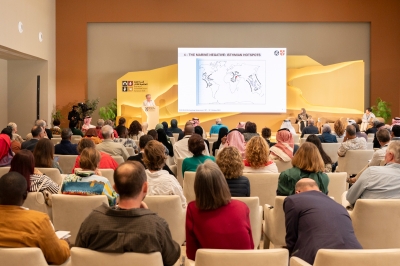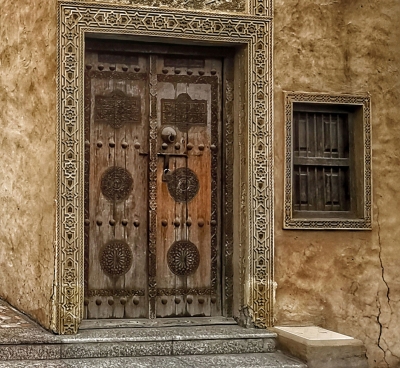
King Fahd Cultural Center is a center dedicated to organizing cultural activities in the Kingdom of Saudi Arabia. It offers its resources for events and activities that attract creative individuals from various fields of thought, literature, and the arts. Its headquarters is located in Riyadh, on the eastern fringe of Wadi Hanifa.
Area of King Fahd Cultural Center
The total area of the center is one hundred thousand m², with the ground floor covering about ten thousand m², while the other three floors cover 23,000 m². The building stands at a height of twenty-eight m, making it an architectural masterpiece of Islamic architecture and one of the most important cultural and civilizational landmarks in the Kingdom.
Opening of the King Fahd Cultural Center
The King Fahd Cultural Center was inaugurated in 2000, as part of the Kingdom's activities to celebrate Riyadh being chosen as the Capital of Arab Culture for 2000. Ministers of culture and media from Arab countries attended the opening, as they were in Riyadh for their twelfth meeting at the time.
King Fahd Cultural Center activities
The center hosts artistic and cultural evenings such as: Nabati poetry nights, theater nights, short film nights, Saudi novel nights, creativity nights for people with disabilities, Eid celebration nights, folkloric nights, and traditional music nights.
The center organized festivals showcasing Saudi talents, mainly a festival for short films that provided Saudi directors with the opportunity to showcase their work. It also held a children's film festival and hosted a festival for productive families with disabilities. Additionally, it celebrated Saudi Women's Day and organized a children's book fair. Moreover, the center hosted the Egyptian Opera Concert for the first time in the Kingdom.
On an official level, the King Fahd Cultural Center hosted events and activities for Saudi ministries, authorities, universities, charities, and embassies. This was aimed at strengthening cooperation ties, enhancing the cultural role of the center, benefiting from the experiences of these entities, and providing an opportunity for all cultural and developmental events to utilize the center and its facilities.
Among the most significant celebrations and events were the National Day celebrations, Najd artistic and heritage nights, performances by the German orchestra and Chinese shows, Japanese Cultural Week, Cultural Day for Muslims from Sri Lanka, Pakistani cultural nights, Chinese Cultural Week, and many other events that attracted members of the community.
Components of the King Fahd Cultural Center
The King Fahd Cultural Center has two separate entrances leading to the main foyer and then to all sections of the center, including the main reception halls, the 'Royal Hall' located on the first floor, the 'VIP Lounge', and a meeting hall. The main foyer is designed to host exhibitions covering an area of two thousand m², while the main theater accommodates up to three thousand spectators, making it the third-largest theater in the world. Its smaller theater seats 435 spectators. The center's library houses more than fifteen thousand volumes and publications and can accommodate over eighty researchers and readers simultaneously. The center is supported by several amenities, including parking lots for approximately nine hundred cars, administrative offices, and a number of side gardens.
The Planetarium at the King Fahd Cultural Center
The King Fahd Cultural Center is distinguished by the presence of a planetarium with a diameter of eighteen m and seating for 208 people, specifically designed for celestial domes that can rotate in all directions. The dome provides enthusiasts of astronomy with information and live images of the solar system, stars, lunar eclipses, solar eclipses, and lunar phases. It also enables them to study lunar month start and end, track comets, and fully monitor significant astronomical events and periodic variations.
Related quizzes

